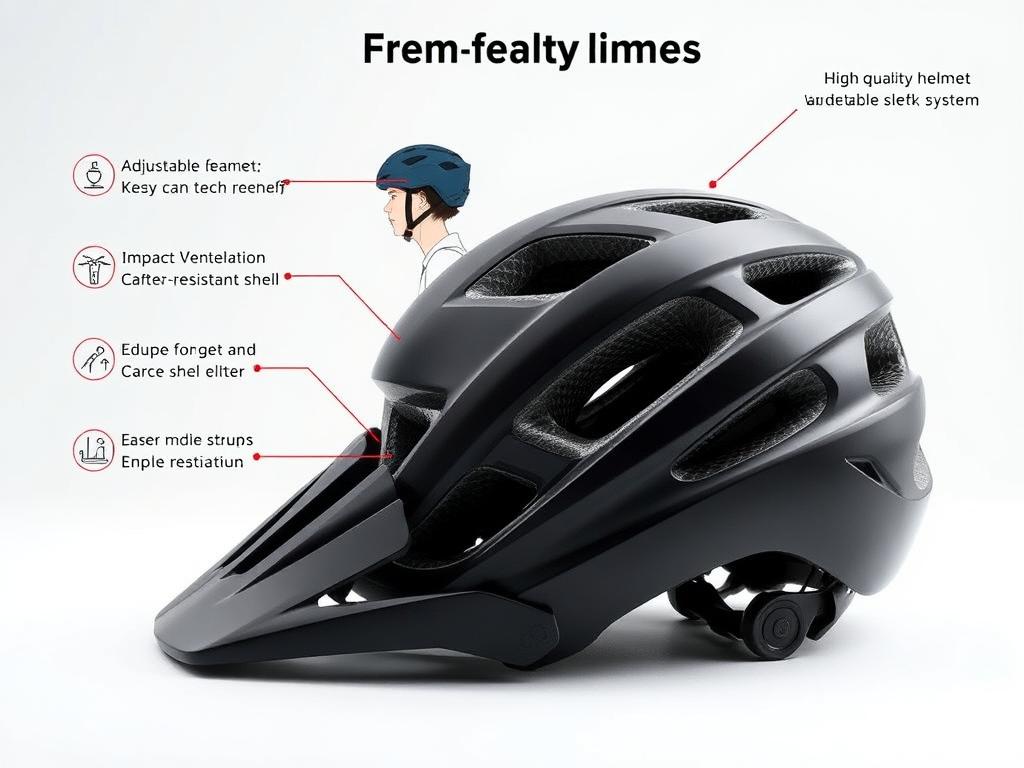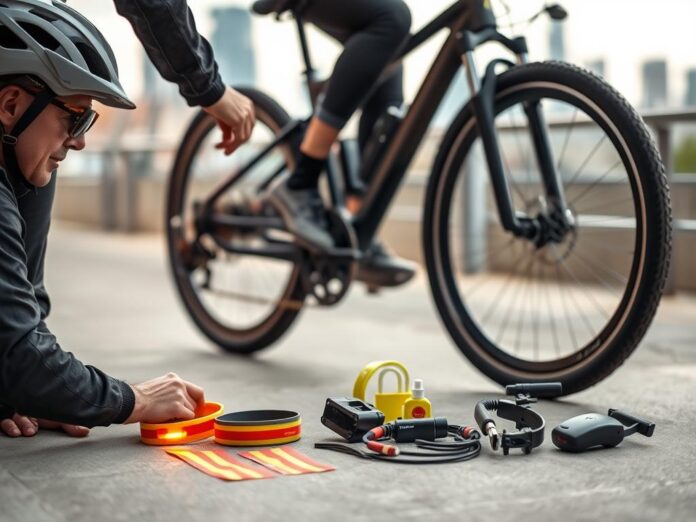“Safety is not an accident, but a deliberate choice,” said professional cyclist Lance Armstrong. This wisdom is key when getting ready for an e-bike ride. Your pre-ride checks are the base for a safe and fun ride.
E-bikes have changed how we move around cities in the U.S. They mix tech with personal freedom. Before you ride, knowing how to check your battery, brakes, tire pressure, and electrical parts is crucial for safety.
Every e-bike rider needs a detailed pre-ride routine. It’s not just about mechanical checks. It’s about keeping you safe and your bike running well. Checking battery levels and brake function are key steps to protect you and your bike.
Key Takeaways
- Always perform a complete safety check before riding
- Verify battery charge and electrical system functionality
- Inspect tire pressure and brake responsiveness
- Understand your e-bike’s specific safety requirements
- Develop a consistent pre-ride safety routine
The importance of a comfortable and correctly fitted helmet
Wearing a helmet is key to staying safe on an e-bike. It’s not just about protection. It’s about having the right gear to keep you safe while you ride.

How to Determine the Perfect Helmet Fit
Finding the right helmet fit is crucial for safety. Here are some important things to check:
- The helmet should sit level on your head
- There should be no more than two finger-widths between your eyebrows and the helmet’s edge
- The chin strap must be snug but comfortable
- When you shake your head, the helmet should not move independently
Essential Features of a Comfortable E-Bike Helmet
Your helmet should be safe and comfortable. Look for these important features:
- Lightweight materials that reduce neck strain
- Adequate ventilation to prevent overheating
- Adjustable fit systems for personalized comfort
- Impact-absorbing liner for enhanced protection
Understanding Safety Standards
When picking an e-bike helmet, check for safety standards. Look for the Consumer Product Safety Commission (CPSC) and NTA 8776 certifications. These show your helmet can handle the speeds and impacts of e-bike riding.
Why Proper Helmet Fit Matters for E-Bike Riders
E-bikes can go faster than regular bikes. So, a well-fitted helmet is even more important. Your helmet is like a safety check for your ride, just like checking tire pressure is for your bike’s performance. Getting a good helmet is a smart move for safe e-bike riding.
Performing a Simple A-B-C Check for Electric Bikes
Before you ride your e-bike, make sure it’s safe. The A-B-C check is key to getting your bike ready for different terrains and weather. It helps you avoid risks and stay visible on the road.
Checking Tire Pressure: The ‘A’ in ABC
Right tire pressure is vital for your e-bike’s performance. Here’s how to check it:
- Use a reliable bicycle tire pressure gauge
- Check manufacturer’s recommended PSI (typically 30-65 PSI)
- Inspect tires for visible damage or wear
“Maintaining correct tire pressure is not just about comfort—it’s a legal requirement for safe cycling.” – US Cycling Safety Board
Brake Inspection: Ensuring Safe Stopping Power
Your e-bike’s brakes need careful attention. Do these important brake checks:
- Test brake lever responsiveness
- Verify brake pad condition
- Check motor cut-off functionality
E-bike brakes are different from regular bikes. Always confirm that the motor disengages when brakes are applied. This is a crucial safety feature for electric bikes.
Final Safety Verification
Before you ride, do a full check of your e-bike. Look at chain tension, make sure all electrical connections are tight. Also, check if your bike meets local laws for electric bikes.
Understanding your e-bike’s controls and assist levels before setting off
Learning how to use your e-bike’s controls is key for a safe ride. Before you start, get to know the bike’s power system, display, and assist options. Knowing how to check brakes and road rules will make you more confident on the road.
First, learn how to turn your e-bike on and off safely. The power button is usually near the battery or display. Make sure you’re steady and the bike is flat before turning it on or off. Also, check your lights and reflectors to stay visible while riding.
E-bike displays show important info like battery level and speed. They might look complex, but they’re crucial. Create a routine to check these displays and understand what they mean. Remember, your bike’s weight limits can affect its performance.
Get used to the pedal assist levels in a safe spot before riding in traffic. Start with the lowest level and increase it as you get more comfortable. If your e-bike has a throttle, learn how to use it carefully. Always think about the weather and local e-bike rules in the United States.






